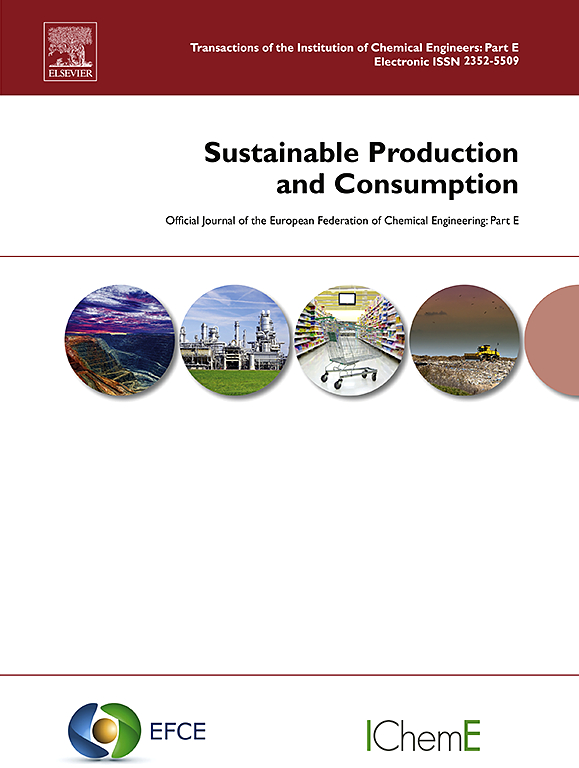Shaping China's carbon peak roadmaps: A dynamic model for provincial residential buildings
IF 9.6
1区 环境科学与生态学
Q1 ENVIRONMENTAL STUDIES
引用次数: 0
Abstract
Collaborative emission reduction in the provincial residential building sector is crucial for achieving China's “Dual Carbon” goal. However, existing research failed to clearly depict the provincial residential buildings carbon peak roadmaps or adequately account for future uncertainties, thereby hindering the formulation of effective provincial carbon control targets and collaborative emission reduction strategies. This study develops a provincial-level residential building carbon peak dynamic simulation model, integrating an improved Kaya identity, Monte Carlo simulation, and scenario analysis. The model incorporates peaking time, size constraints, and uncertainties in key variables to capture inter-provincial variations in urban and rural residential building carbon emissions and support the formulation of provincial roadmaps. Results show that under strict carbon reduction policies, both urban and rural residential buildings experience earlier and lower peak carbon emissions. In the business-as-usual scenario, the peak value for urban residential building carbon emissions (UBC) ranges from 3.63 MtCO2 in Hainan to 97.89 MtCO2 in Shandong, with Ningxia peaking as early as 2007. For rural residential building carbon emissions (RBC), peaking time range from 2026 to 2036, with values between 2.03 and 53.97 MtCO2. Dynamic simulation results suggest RBC will peak before 2030, while UBC will peak later, around 2034, with values ranging from 751.46 to 799.56 MtCO2. Provincial policies significantly influence peak times. In Henan and Shandong, the policies delay UBC peaks, whereas in Hainan and Beijing, they accelerate RBC peaks. This study offers valuable insights for developing differentiated carbon peak roadmaps and formulating targeted policy recommendations.
塑造中国碳峰值路线图:省级住宅建筑的动态模型
省级住宅建筑领域的协同减排对于实现中国的“双碳”目标至关重要。然而,现有的研究没有清晰地描绘出省级住宅建筑碳峰值路线图,也没有充分考虑到未来的不确定性,从而阻碍了有效的省级碳控制目标和协同减排策略的制定。本研究将改进的Kaya身份、蒙特卡罗模拟和情景分析相结合,建立了省级住宅建筑碳峰值动态模拟模型。该模型考虑了峰值时间、规模约束和关键变量的不确定性,以捕捉城乡住宅建筑碳排放的省际差异,并为各省路线图的制定提供支持。结果表明,在严格的碳减排政策下,城乡住宅建筑的碳排放峰值都更早、更低。在常规情景下,城市住宅建筑碳排放峰值(UBC)从海南的363 MtCO2到山东的97.89 MtCO2不等,宁夏早在2007年就达到峰值。农村住宅建筑碳排放(RBC)峰值时间为2026 ~ 2036年,峰值值为2.03 ~ 53.97 MtCO2。动态模拟结果表明,RBC将在2030年之前达到峰值,而UBC将在2034年左右达到峰值,峰值范围为751.46 - 799.56 MtCO2。省级政策显著影响高峰时段。在河南和山东,政策推迟了UBC峰值,而在海南和北京,政策加速了RBC峰值。本研究为制定差异化碳峰值路线图和制定有针对性的政策建议提供了有价值的见解。
本文章由计算机程序翻译,如有差异,请以英文原文为准。
求助全文
约1分钟内获得全文
求助全文
来源期刊

Sustainable Production and Consumption
Environmental Science-Environmental Engineering
CiteScore
17.40
自引率
7.40%
发文量
389
审稿时长
13 days
期刊介绍:
Sustainable production and consumption refers to the production and utilization of goods and services in a way that benefits society, is economically viable, and has minimal environmental impact throughout its entire lifespan. Our journal is dedicated to publishing top-notch interdisciplinary research and practical studies in this emerging field. We take a distinctive approach by examining the interplay between technology, consumption patterns, and policy to identify sustainable solutions for both production and consumption systems.
 求助内容:
求助内容: 应助结果提醒方式:
应助结果提醒方式:


